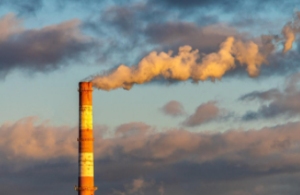 What does air pollution really mean? The threat to the environment and our health – undoubtedly. However, its components can be very different, and understanding them is the key to an effective fight for change. Let’s take a closer look at air pollution, forming its definition and analysing the impact of its elements on human health.
What does air pollution really mean? The threat to the environment and our health – undoubtedly. However, its components can be very different, and understanding them is the key to an effective fight for change. Let’s take a closer look at air pollution, forming its definition and analysing the impact of its elements on human health.
The problem of air pollution is complex – that’s why there is no universal way to solve it. Before creating the strategy to fight it, the regions should break their own cases down in order to find reasons behind the worsening air quality. Only this way, the steps taken to fight air pollution can bring long-term improvement.
Smog vs. air pollution – is it the same thing?
Air pollution is often considered a synonym of smog, but that’s not entirely true. Smog is a result of air pollution and appears under specific conditions. It’s concentrated, and thus, visible and perceptible, whereas that’s not always the case with the polluting particles.
Air can be polluted without you even noticing it – under the clear sky. Because of that, it’s crucial to not rely on the smog alarm and monitor the air pollution on your own – for example, through interactive maps, like Airly.org. They display real-time data on the concentration of toxic gases and particulate matter in the air. That’s why using them allows adopting appropriate measures at the exact moment – it could be air filtration (indoors), wearing a mask, or even staying at home.
What is air pollution, then? In short, we could sum it up as a mix of gases and solid particles in the air. It’s worth noting that even zones with no human activity can be polluted as the result of natural occurrences such as wildfires or volcano eruptions. However, human is the main culprit when it comes to continuous air pollution. Industrial activity, fossil fuel burning, car traffic – all of these factors contribute to it.
Particles qualified as pollutants can vary. Among the solid ones, we could mention dust, dirt, or even mould spores. The most common gases include:
♦ nitrogen oxide
♦ sulphur dioxide
♦ carbon oxides
♦ carbon dioxide
The particulate matter can also carry heavy metals. The most common ones are the result of industrial activity and include:
♦ arsenic
♦ nickel
♦ lead
♦ mercury
♦ cadmium
Smog – what are its types?
Smog appears when the masses of air mix with the polluting particles and form a thick cloud. It’s usually visible, looking like a fog, and can, in some cases, be a respiratory irritant. Even if it seems neutral for your respiratory system and senses in general, this impression could be misleading. Smog has negative implications on human health – particularly in the long term.
There are two types of smog: photochemical and sulphurous, or, in other words, the Los Angeles type and London type. The first one appears in the high temperatures, and its main catalyst is car traffic. The second one, on the other hand, can be seen mainly in winter and is a result of burning fossil fuels.
Are you wondering how to avoid the negative impact of smog in your area? Monitor the emissions daily with the air quality map that provides real-time data – like, for example, Airly.org. This way, you can take appropriate measures for your personal protection.
Shift Frequency © 2021 – Air pollution and smog –
all you need to know
